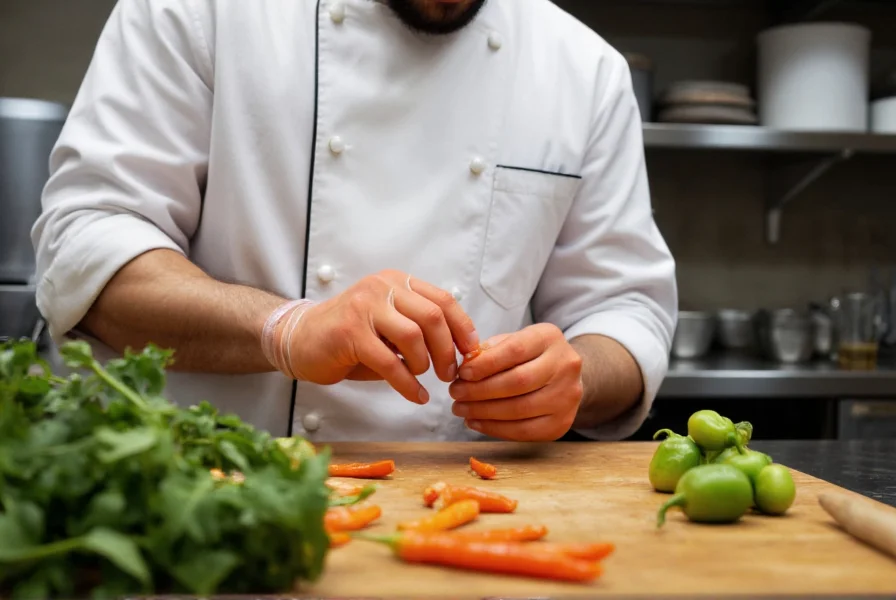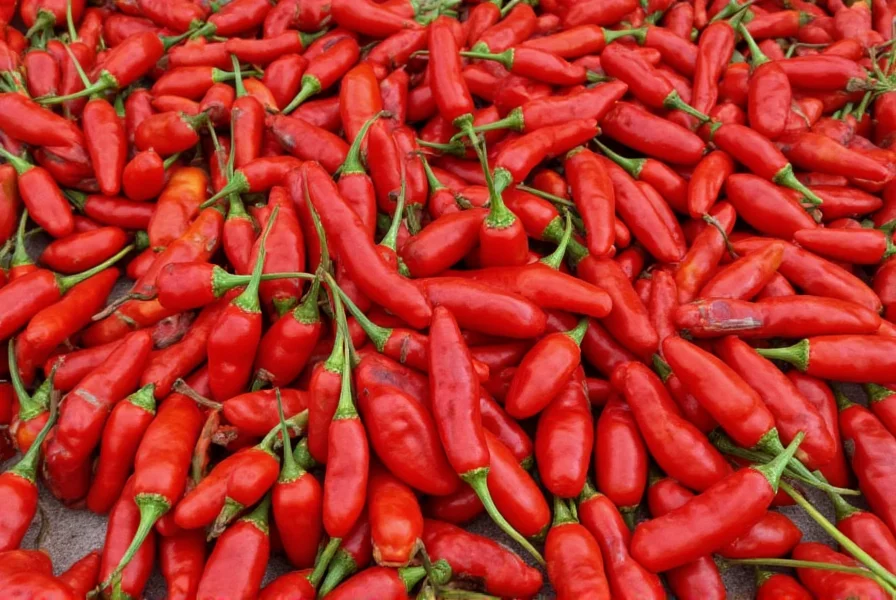Understanding the Scoville pepper scale is essential for anyone working with or consuming spicy foods. This measurement system provides an objective way to compare the heat intensity of different peppers, from the mildest bell peppers to the world's hottest varieties. The scale operates on a simple principle: the higher the Scoville Heat Unit (SHU) rating, the more capsaicin is present, and consequently, the hotter the pepper will taste.
History and Development of the Scoville Scale
Pharmacist Wilbur Scoville created the original Scoville Organoleptic Test in 1912 while working for Parke-Davis pharmaceutical company. His method involved diluting an alcohol extract of chili pepper until the heat was no longer detectable by a panel of five trained tasters. The degree of dilution determined the Scoville rating—for example, a 1:100,000 dilution would equal 100,000 SHU.
This subjective approach had significant limitations, as human taste perception varies considerably between individuals. In the 1980s, high-performance liquid chromatography (HPLC) emerged as a more precise, objective measurement method. Modern laboratories now use HPLC to measure capsaicinoid concentration directly, then convert these measurements to Scoville Heat Units using a standardized formula.
How the Scoville Scale Actually Works Today
While the original Scoville test relied on human tasters, contemporary measurements use scientific instrumentation. High-performance liquid chromatography separates and quantifies the various capsaicinoids present in a pepper sample. The total capsaicinoid concentration is then multiplied by 16.7 to convert to Scoville Heat Units.
It's important to understand that Scoville ratings represent a range rather than a fixed number. Environmental factors like soil conditions, climate, and cultivation practices can cause significant variation in heat levels even within the same pepper variety. A jalapeño, for instance, might range from 2,500 to 8,000 SHU depending on growing conditions.
Pepper Heat Reference Chart
| Pepper Variety | Scoville Heat Units (SHU) | Heat Level Description |
|---|---|---|
| Bell Pepper | 0 SHU | No heat |
| Pepperoncini | 100-500 SHU | Mild |
| Jalapeño | 2,500-8,000 SHU | Moderate |
| Serrano | 10,000-23,000 SHU | Hot |
| Habanero | 100,000-350,000 SHU | Very hot |
| Ghost Pepper (Bhut Jolokia) | 800,000-1,041,427 SHU | Extremely hot |
| Carolina Reaper | 1,400,000-2,200,000 SHU | World's hottest |
Practical Applications of the Scoville Scale
Chefs and home cooks use the Scoville scale to select appropriate peppers for recipes, ensuring the desired heat level without overwhelming other flavors. Food manufacturers rely on SHU measurements for product consistency, particularly in hot sauces and spicy snack foods. Understanding scoville heat units explained helps consumers make informed choices based on their personal heat tolerance.
When working with extremely hot peppers (above 100,000 SHU), proper safety precautions are essential. Capsaicin can cause skin irritation and temporary blindness if it contacts eyes. Always wear gloves when handling hot peppers and avoid touching your face during preparation.

Common Misconceptions About Pepper Heat Measurement
Many people believe that the seeds are the hottest part of a chili pepper, but capsaicin is actually concentrated in the white pith or placenta that holds the seeds. The seeds themselves contain minimal capsaicin but can absorb heat from the surrounding tissue.
Another frequent misunderstanding involves the relationship between pepper size and heat. Smaller peppers aren't necessarily hotter—heat depends on genetics and growing conditions rather than physical size. The Scoville scale measurement method provides the only reliable way to compare heat levels across different varieties.
Using the Scoville Scale in Everyday Cooking
When substituting one pepper for another in recipes, consult a scoville scale chart to maintain appropriate heat levels. For example, if a recipe calls for cayenne pepper (30,000-50,000 SHU) but you prefer milder heat, you might substitute serrano peppers (10,000-23,000 SHU) instead of using the same quantity of a hotter variety.
Remember that cooking can affect perceived heat. Capsaicin is fat-soluble, so adding dairy products like yogurt or sour cream can help mitigate excessive spiciness. Sugar and acidic ingredients like lime juice also counteract heat perception, making them valuable tools when working with high-scoville peppers.
What does 1,000,000 Scoville units mean in practical terms?
A rating of 1,000,000 Scoville Heat Units indicates an extremely hot pepper that requires significant dilution before the heat becomes undetectable. In practical terms, this level of heat (found in peppers like the Ghost Pepper) can cause intense burning sensations, sweating, and even temporary discomfort. Only experienced consumers of spicy foods should attempt peppers in this range, and even then, in very small quantities.
Why do Scoville ratings for the same pepper vary so much?
Scoville ratings vary due to multiple factors including growing conditions (soil, climate, water), genetics within the same variety, and ripeness. A jalapeño grown in ideal conditions might reach 8,000 SHU, while the same variety in less optimal conditions might only reach 2,500 SHU. This natural variation is why pepper heat is always expressed as a range rather than a single number.
How was the Scoville scale originally tested before modern technology?
The original Scoville Organoleptic Test involved dissolving dried pepper in alcohol, then progressively diluting this solution in sugar water until a panel of five tasters could no longer detect heat. The degree of dilution determined the rating—for example, if dilution to 1 part in 5,000 was needed before heat disappeared, the pepper rated 5,000 SHU. This subjective method was replaced by more accurate laboratory techniques in the 1980s.
Can the Scoville scale measure non-pepper spicy foods?
Yes, the Scoville scale can measure any food containing capsaicinoids, including hot sauces, spicy snacks, and even some non-food products like pepper spray. Pure capsaicin measures at 16,000,000 SHU, while commercial pepper sprays typically range from 2,000,000 to 5,300,000 SHU. However, the scale doesn't measure pungency from non-capsaicin sources like wasabi or black pepper, which use different chemical compounds to create heat.
What's the difference between Scoville units and ASTA pungency units?
Scoville Heat Units (SHU) represent the traditional measurement of pepper heat, while ASTA (American Spice Trade Association) pungency units use a different calculation method based on colorimetric analysis. One ASTA unit equals approximately 15 Scoville units. The industry has largely shifted to using HPLC measurements reported in parts per million of capsaicinoids, which are then converted to Scoville units for consumer understanding.











 浙公网安备
33010002000092号
浙公网安备
33010002000092号 浙B2-20120091-4
浙B2-20120091-4